During my recent trip to Thailand, I attended Thai Yoga (a.k.a. Rusie Dutton, i.e. “ascetic exercises”) classes at the Wat Po Temple. As a yoga practitioner, I took note of the similarities and differences between Thai yoga and the Hatha Yoga of India. It’s no surprise that Thai Yoga would display the influence of India. Indian influence from olden times can be seen throughout Thailand. The roots of Thai Massage (a.k.a. Thai Yoga Bodywork or Nuad Bo Rarn) itself are attributed to Shivago (also, written/pronounced Chivako), a north Indian doctor in the Buddha’s community of followers.
One can plainly see the influence of Hatha yogasana (postures) in these Thai exercises, but the details vary. I’m interested in how movement systems (e.g. martial arts) with a common ancestry diverge over time in response to the unique needs of a different culture. I believe that not only the new system evolves, but there’s also a continuing evolution in the original line. One can, therefore, end up with systems that look little alike over the course of several generations.
The degree to which the Thai Yoga poses vary from Hatha Yogasana varies. In the Thai Yoga class we did a simple lateral bend with interlocked fingers that was identical to a Sivinanda Yoga pose named tiryaka tadasana.
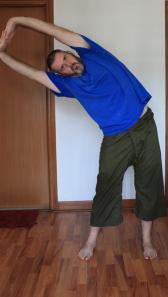
Lateral Bend (tiryaka tadasana)
Balancing poses made up much of the Wat Po Thai Yoga sequence. This makes sense as the course was aimed at practitioners of Thai Massage and balance is important in this massage system because there are techniques that involve standing on one foot as one applies pressure with the other fort or in which one must stand to apply stretches. (Obviously, it’s bad for business to step on the recipient in an uncontrolled fashion or to topple onto them.) There were poses that were reminiscent of Natarajasana (Shiva’s Dancer pose), Vrksasana (tree pose), and Utthita Hasta Padangusthasana (hand to big toe pose). Each of these varied in the details. The most prevalent Thai variation was bending the support leg to lower one’s center-of-gravity. In Hatha Yoga, it’s usually taught to keep the support leg as straight as one can manage (this both contributes to the stretch and can prevent loading the tendons.)
NATARAJASANA: There were two variants of this pose practiced at Wat Po. Both folded the torso more forward than one would typically see in Hatha Yoga, as well as bending the support leg more. The first version (palm on front knee) is as such:
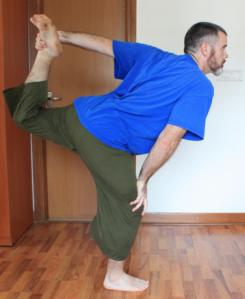
Version 1 from Thai Yoga (Palm on Knee)
The second version has the front hand up in a manner similar to the Hatha version, but the torso isn’t kept upright and the support leg is deeply bent.
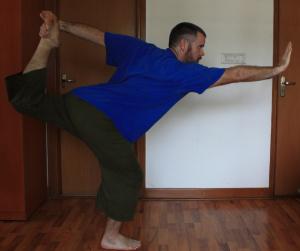
Thai Version 2 (hand out front)
In contrast, the Hatha version is more upright.
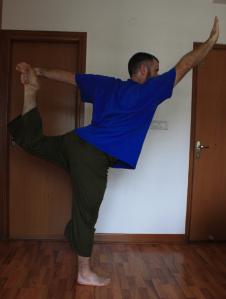
Natarajasana
VRKSASANA: There are two variants of tree pose in the Thai Yoga. In both the ankle is kept on top of the thigh and the support leg is bent. Version one is as follows:
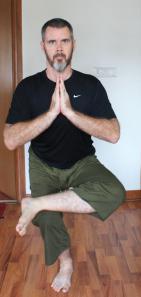
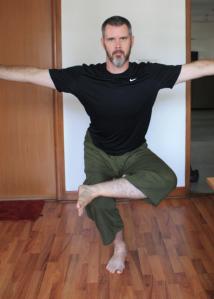
Version 1 begins and ends in Pranamasana (hands in prayer pose) but hands are taken out to the side in between
Version 2 includes a wrist stretch with the balance pose. One puts fingers on thigh facing upward and the squat folds the wrist back.
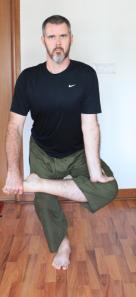
Version 2 with wrist stretch
The Indian version:
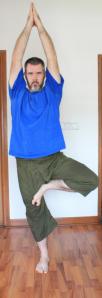
UTTHITA HASTA PADANGUSTHASANA: There are also two variations of this pose. Note the bending of the support knee. Version 1 holds the foot with the same side hand and places the opposite palm on the knee.
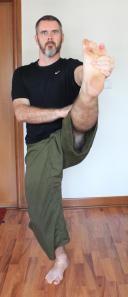
Version 1 from front
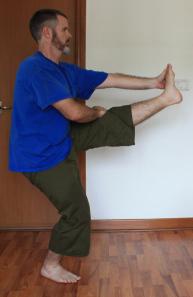
Version 1 from side
Version two holds the extended foot with both hands.
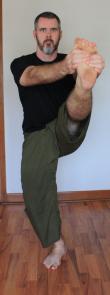
Version 1 from the front
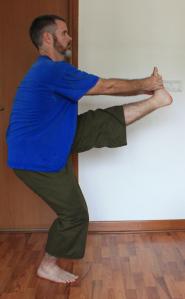
Version 1 from the side
For comparison, the Hatha Yoga version:
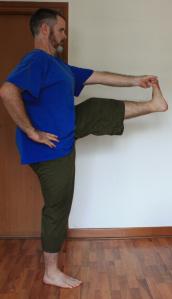
Utthita Hasta Padangusthasana from side
UTKATA KONASANA: There are three variants of a pose that is usually called Goddess pose or Utkata Konasana. The difference here primarily deals with how the hands are positioned, but given the many variants within Hatha Yoga for hand position, this can be seen as a virtually identical pose.
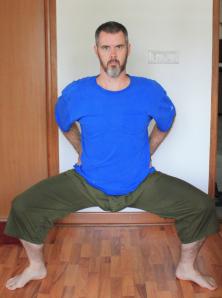
Thai version 1 of Goddess pose
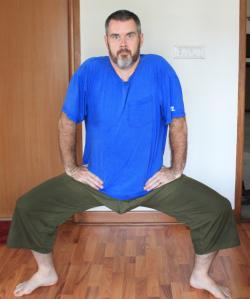
Thai version 2 of Goddess pose
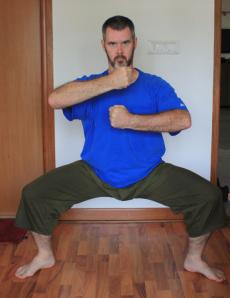
Thai version 3 of Goddess pose
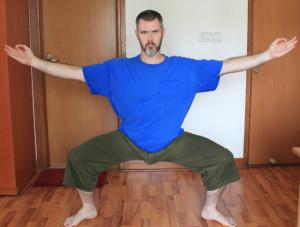
Goddess pose with hands in Chin mudra.
VIRABHADRASANA: There is a series of five lunge poses that are reminiscent of the Virabhadrasana (Warrior). I’ve dropped the first one because it requires a photo taken from a back angle becuas it involves pulling one’s wrist behind one’s back.
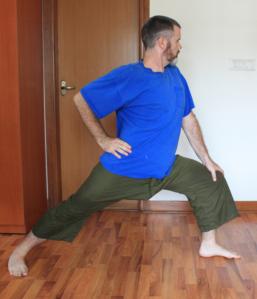
Thai Version 2 hand on front knee
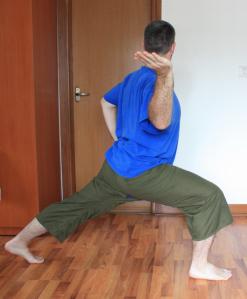
Thai version 3 twist
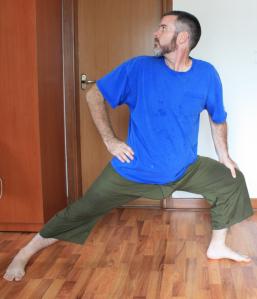
Thai version 4 looking back
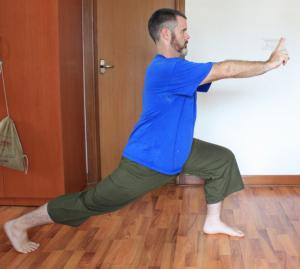
Thai version 5 taking aim
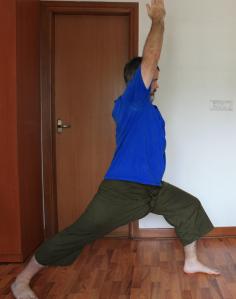
Virabhadrasana I
By B Gourley in exercise, fitness, India, Massage, Movement, Thailand, yoga on September 24, 2014.
